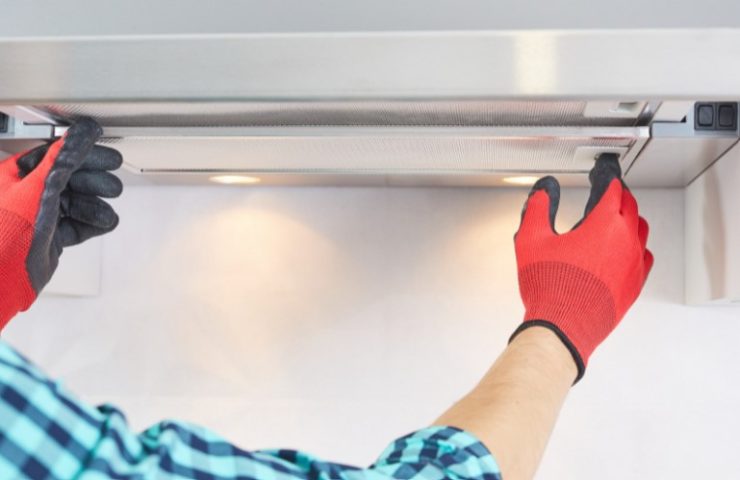Whether you’re remodeling, building a new home, or just replacing an old worn-out unit, it’s important to mount your range hood securely and at the correct height above your stove.
In this guide to mounting a range hood, we’ll look at the best mounting height and how it affects the performance and safety of your hood. Plus, we’ll go over the basics for mounting a hood depending on the type of hood and kitchen layout.
In This Article
How High Should Your Hood Be Mounted
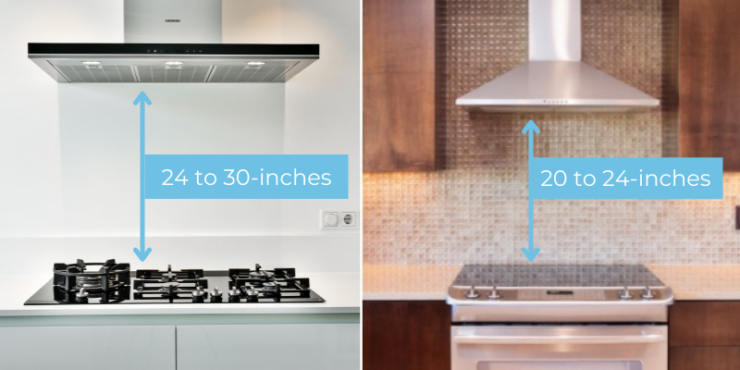
Every manufacturer will provide a recommended mounting height for their hoods. But, the general rule of thumb is that range hoods should be mounted between 20-24 inches above electric or induction stoves. And between 24-30 inches above a gas range.
Does A Hood’s Size Affect The Mounting Height?
Choosing the right size range hood is determined by the size of your cooktop. The most important thing here is that your hood is at least as wide as your range, although a hood that’s 6 inches wider than your cooktop is ideal.
This creates a larger capture area where smoke and fumes are effectively removed by the hood. But, the width and depth of a hood do not change how high it should be mounted.
Does A Hood’s Power Affect The Mounting Height?
For a majority of residential kitchen hoods, the mounting height will fall between the common 20-30 inch mounting height.
However, if you start looking at high-powered or professional range hoods, you may come across slightly higher recommended mounting heights. Often somewhere between 28-36 inches above the cooktop.
The extra clearance above your stove will take into account the increased suction power of those particular hoods. Having them raised slightly higher can create a larger and more efficient capture area to remove more smoke and fumes.
What Happens If A Hood Is Mounted Too High?
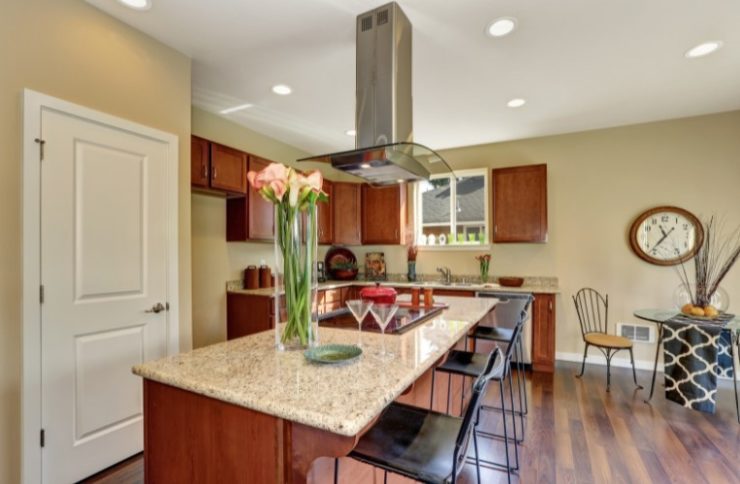
When a range hood is mounted higher than its recommended mounting height, it simply becomes less effective at doing its job.
Hoods rely on an internal blower or fan to suck up the fumes created while you cook. And they need to do this before those fumes can escape into the kitchen and spread through the air in your home.
As you move your hood further away from the cooktop, the suction power is reduced. That leads to smoke, steam, and other fumes entering the room before they are captured by the hood. If you find yourself in this situation, chances are that you’ll end up using the hood’s highest fan setting more often.
This could help the hood to be a bit more effective. But, you’ll also have to listen to the louder fan speed, and you may wear out some of the hood’s components faster. Going with a quieter hood may solve part of the problem, but it’s still not ideal.
Read Also: Your Ultimate Guide to Range Hoods
What Happens If A Hood Is Mounted To Low?

Now, if your hood is mounted too close to your range, there are a few more things that can go wrong.
First, you can easily damage your hood. Even though hoods are meant to withstand some heat, if they are mounted too close to your stove they can be exposed to excessive amounts.
This can cause motors to overheat, or you may end up melting plastic components, wiring, and electronics within the hood. And even if there is no immediate or visible damage, you can shorten your hood’s lifespan by putting additional strain on the motor.
In more severe cases, a hood that is mounted too close to a range can end up catching on fire. When a hood is mounted too low it will accumulate more grease, faster than when mounted at the correct height.
This, combined with excessive heat from a stove, especially gas ranges, can end up starting a fire within the hood itself. It can be even more of a concern if you do a lot of high-heat or wok cooking where flare-ups are more common.
Mounting Different Types Of Range Hoods
How and where you mount your range hood will depend on what type it is. Your hood should come with detailed installation diagrams specific to that model, but we’ll quickly go over the very basics for each type of hood.
Wall Mount Range Hoods
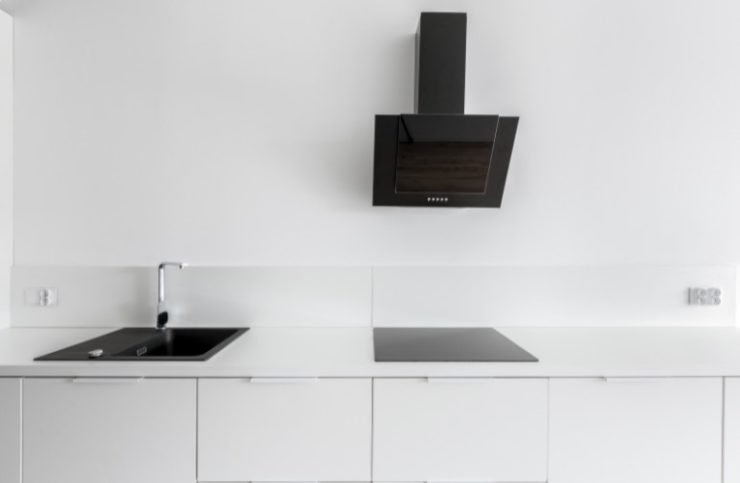
The name really gives it away on this one, but wall mount hoods will mount directly to the wall above your range.
Ideally, you’ll have studs in the wall behind your stove. This will give you a secure place to screw into and hold the hood’s mounting bracket.
If there are no usable studs, you may be able to get away with using drywall anchors. Just make sure that they have plenty of weight tolerance for your hood and chimney.
After the hood is mounted, you can attach the chimney and secure that to the wall as well.
Under Cabinet Range Hoods
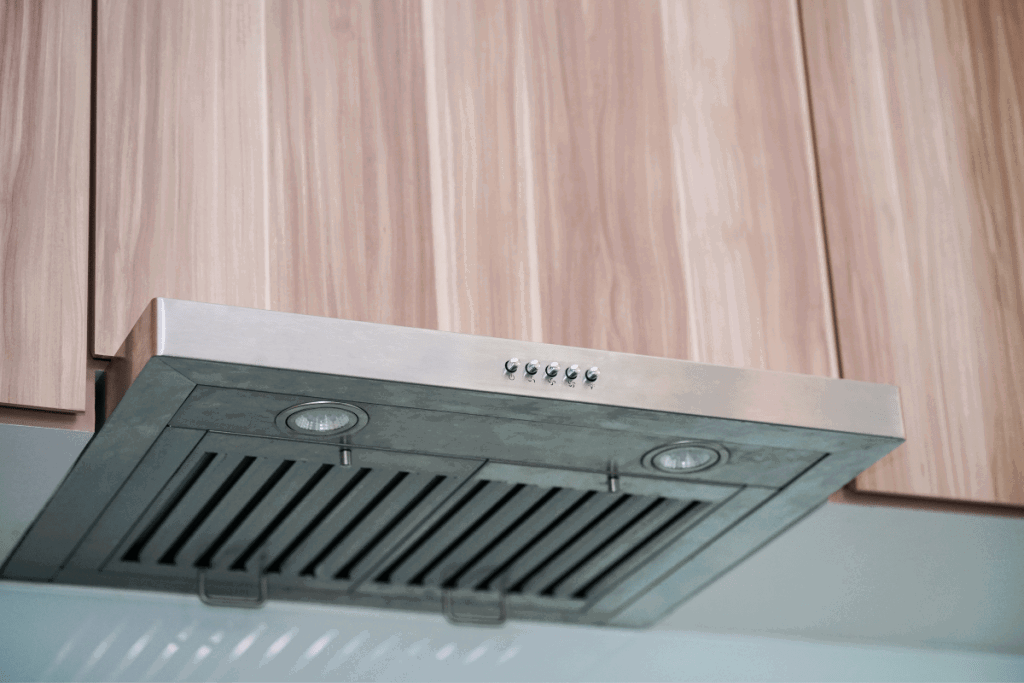
Once again, as the name implies, these hoods mount underneath the cabinets above your range.
Even though these hoods fit snug up underneath a cabinet, they are usually still mounted to the wall for support.
So, the process is actually about the same as with a wall mount hood. Although, this option can be a bit easier since you have a very specific space to fit it into, which helps with centering a leveling. And, you don’t have to worry about any chimney installation.
Range Hood Inserts
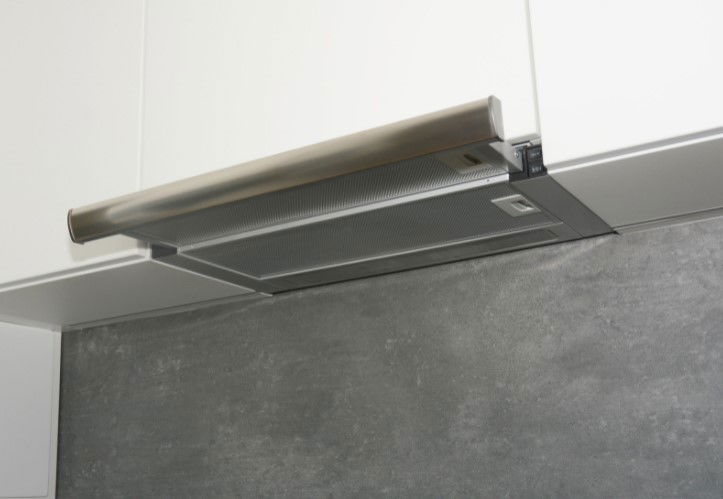
Range hood inserts sit recessed in a custom cabinet or hood surround above your cooktop. The weight of these hoods is supported almost entirely by the cabinet itself. So instead of mounting to a wall, these will actually be screwed directly into the custom cabinet to be held in place.
Island Range Hoods
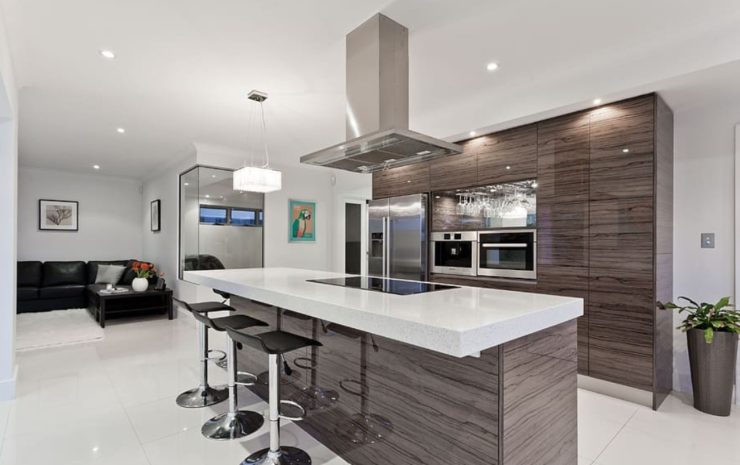
Unlike all of the other options, island range hoods don’t rely on the support of a wall when they are mounted. Since they’re free-hanging in the middle of the room, these hoods are mounted directly to the ceiling.
For these, you’ll need to locate a joist in the ceiling above your range. You can think of a joist just like a stud, only it’s in the ceiling instead of the wall. This is very important since it will be supporting the entire weight of the chimney and hood.
Instead of mounting the hood first, you’ll mount the ceiling support brackets, followed by the chimney, and finally the hood itself last.
Final Thoughts
Mounting a range hood is a pretty straightforward process, especially if you’re replacing an old unit that you can use as a reference guide. Diligence with your measurements and mounting height are two of the most important points for both safety and performance.
Also, before you even embark on any mounting or measuring, step one is to plug in and ensure your hood actually works. If you need any range hood inspiration or have other related questions, be sure to check out our extensive range hood buying guide.
Frequently Asked Questions
How High Should My Hood Be Mounted Above My Range?
In most cases, your hood should be mounted between 20-24 inches above an electric stove or between 24-30 inches above a gas range. Check your manufacturer’s recommendation for the best results with your particular model.
Do I Have To Hire A Professional To Install My Hood?
Installing a range hood is a doable DIY project that mostly consists of securing a mounting bracket to your wall or ceiling. Having an extra set of hands is definitely recommended and will make centering and leveling a lot easier.
What If My Range Hood Is Mounted Too High?
If your range hood is mounted too high it will be less effective at removing smoke and other fumes while you cook. As you cook, more grease, steam, and other fumes will escape into your kitchen and the rest of your home before they can be captured by your hood.
